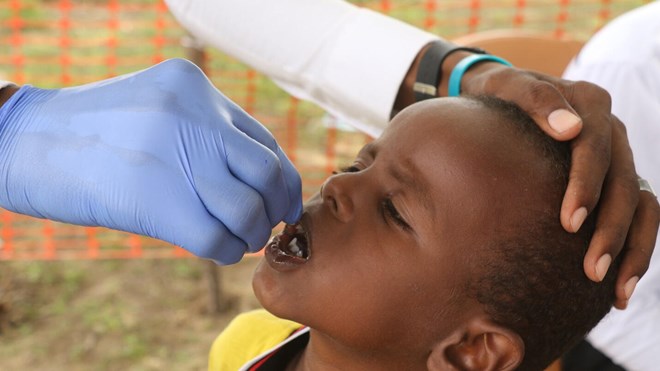Doctors Without Borders
Wednesday June 8, 2022

Somalia and Somaliland are facing one of the worst droughts
in decades after four consecutive poor rainy seasons. Failing crops and rising
food prices, combined with ongoing insecurity and a massive invasion of locusts
that swept across the Horn of Africa, have forced hundreds of thousands of
people to move from rural areas and settle in urban centers in hopes of finding
food, clean water, shelter, and health care. Many others have sought refuge in
camps for internally displaced people, where there is a lack of toilets, hand
washing stations, and clean drinking water.
At the Doctors Without Borders/Médecins Sans Frontières
(MSF) projects in Baidoa, Mudug, Jubaland, Hargeisa, and Las Anod, patients
tell us that they need humanitarian assistance to survive. Many describe their
challenging journeys in search of help, with some walking for more than 20
days, or more than 90 miles, and losing family members while on the move.
“For 20 days we walked while carrying our children,” said a
75-year-old man who recently arrived at a camp in the Lower Juba Region with
his extended family. “We did not have a donkey to carry our children, so it
took us 20 days to reach here. Our donkeys died because of the drought, and we
had no money for a car. We came to Lower Juba because we heard that families
who lost their livestock could get assistance.”
For many people, getting to a camp has not guaranteed that
they receive food, water, or shelter. MSF staff spoke to 60 people in several
camps and most described not having access to safe drinking water.
“We walked for eight days, around 120 to 150 kilometers
[about 75 to 93 miles],” said a 65-year-old woman currently living in a camp
for displaced families in Afmadow. “Our livestock had died in the drought. We
heard that an organization is distributing food in the camps in Afmadow. I was
registered but have not received anything. I am waiting—everyone is waiting.”
“A series of crises, one after another”
The current drought comes on top of decades of conflict,
recurrent climate shocks, frequent disease outbreaks, and increasing poverty in
Somalia and Somaliland. And while the drought worsens, the country is also
experiencing a massive outbreak of measles. Common and preventable diseases
like measles and diarrhea have been leading causes of death among children
here, and widespread water scarcity and food insecurity are creating the
conditions needed for such diseases to spread fast.
“Somalis are facing a series of crises, one after another,”
said Djoen Besselink, MSF’s country representative in Somalia. “Already we are
hearing stories of desperation, with some people telling us they have faced the
impossible choice of leaving one child to die to save others.”
MSF teams have seen close to 6,000 suspected measles cases
from the beginning of the year to mid-May in multiple hospitals across Somalia and
Somaliland. Vaccination rates among children in Somalia are among the lowest in
the world, and the COVID-19 pandemic and widespread insecurity have hampered
efforts to provide routine vaccination to children under five.
“In February, the hospital we support in Baidoa already
treated more than 2,500 children with measles since the start of the outbreak,”
said Bakri Abubakr, MSF’s program manager in Somalia. “Our 20 outpatient
therapeutic feeding centers around Baidoa admit between 700 to 1,000 children per
week.”
Baidoa also recorded its first cholera cases in April 2022.
Malnourished children are three times more likely to die from the waterborne
disease, and poor conditions in the overcrowded informal settlements across the
city are creating the opportunity for its rapid spread. Baidoa, a city of some
130,000 people, is currently hosting more than double its own population of
displaced people, with many families living in the overcrowded settlements.
Acute malnutrition
among children
As the drought drags on and food security worsens, our teams
are already seeing extremely distressing signs of acute malnutrition among
children. A lack of health care services and insecurity have made it difficult
to evaluate the overall nutritional status of people in the region. But in
February, our teams in Baidoa screened 81,706 children under the age of five.
They found severe acute malnutrition rates of 3 percent, and global acute
malnutrition rates of 17 percent.
“In one week alone, we admitted almost 1,000 children to our
outpatient therapeutic feeding program in 20 different centers around Baidoa
city,” said Bakri. “Thirty percent of the children were severely acute
malnourished, indicating that we are far into an acute emergency.”
As more people move to urban areas to seek assistance, the
limited public services available are being severely stretched. In Baidoa, the
arrival of huge numbers of displaced families and the rising cases of cholera
and malnutrition are straining the already struggling health care facilities in
city.
“People find themselves caught in a downward spiral, which
without a swift and sustained response will continue to exact a heavy toll on
Somalis,” said Besselink.